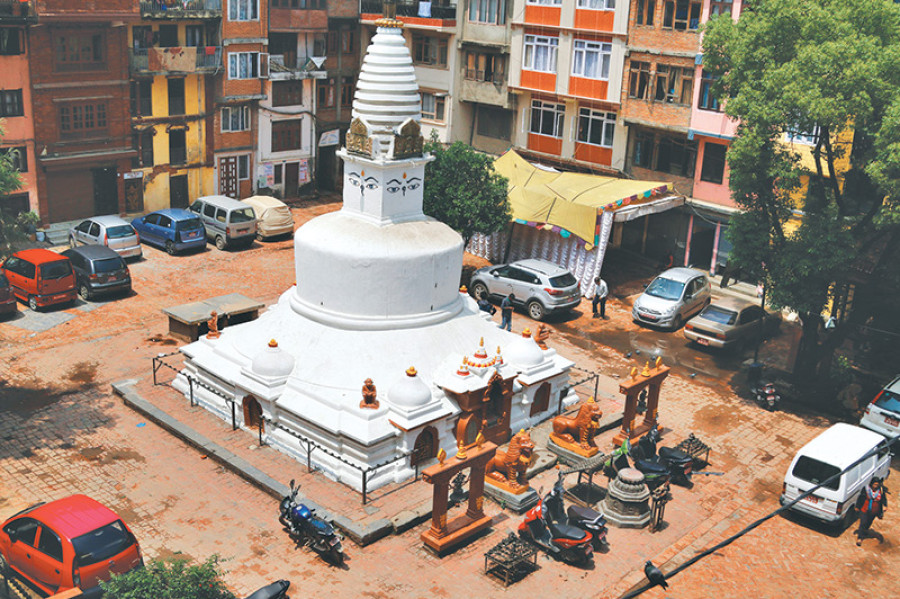Miscellaneous
(Not so) Open Spaces
In a few months’ time, Newars of Kathmandu valley will celebrate Gathe Muga, and in doing so will celebrate the openness of Kathmandu that now solely exists in photos and nostalgic memories of old and not-so-old-timers (such as yours truly).
Looza Mahaju
In a few months’ time, Newars of Kathmandu valley will celebrate Gathe Muga, and in doing so will celebrate the openness of Kathmandu that now solely exists in photos and nostalgic memories of old and not-so-old-timers (such as yours truly). Before that, the Newars would have gathered around in their toles and chowks and cleaned up the hitis, aquifers and reservoirs, some of which might have been dried for some time now.
Newer Newar generations will never fear the stories of the lakhe who abducted kids should they venture out far off in the distant vastness outside of well cordoned off settlements. Nor they will appreciate the fact that tall apartment buildings back then were exceptions and not norms like they are now. They will never understand the possibility of not getting caked in dust every time they step outside their front door ….to ad nauseam.
This is precisely why I don’t waddle in the pool of nostalgia—it gets repetitive and nothing good comes out of it, except a forlorn heart yearning for older Kathmandu where you’d see distant green patches (yes, inside the valley), and wide open spaces. But since the point here is about the open spaces, or the lack thereof, in present day Kathmandu, it is a subject matter that we need to hawk.
That Kathmandu in the past decade has urbanised significantly is not a fact hidden from us, but in doing so it has encroached the intangible spirit of Kathmandu Valley is not something many have thought about. Let me illustrate that with the example with which we started this piece.
The myth behind the Gathe Muga informs us that once Kathmandu had vast swaths of tillable land, but lacked able hands to do so. The Newars of the Valley would then invoke supernatural spirits to take on this herculean task through tantrik means. After the hard work, they’d bid farewell to these helpful spirits, an event which we now recognise as the Gathe Muga. And just in case if any of those mean spirits lingered, everyone in the Valley were protected for they’d be wearing metal rings. A metal ring is to the mean spirits like a silver bullet is for the vampires.
Deconstruct that myth to its last rational component and you’ll be faced with the Kathmandu that once was—full of vast swaths of land, waiting to be tilled. Sadly, the rapid pace of urbanisation, coupled with decades of poor-planning and senseless construction have eaten away at the core of what Kathmandu once was.
The focus now should be to preserve the spaces that are left, for example the chowks and, the bahals. For Newars, these were the spaces that facilitated a lot of communal activities, such as the jatras, the pyakhas and others. These too are under threat.
Case in point, Daubahal, the bahal where I grew up. I grew up playing in the bahal, flying kites, getting chased by dogs and whatnot. Now every time I’ve to crisscross the bahal, I have to carefully navigate should I dent someone’s prized two or four-wheeler, which has permanently taken up residence in the bahal. I’ve heard people argue that these spaces are being used, utilised. True, but not in the way it was designed to be. These were designed to be used as communal spaces, not as parking zones.
I am stating the obvious, pointing at problems but not hinting at solutions, that I am aware of. I hope this will trigger a delayed conversation on how best we are preserving intangible values of Kathmandu, lest it becomes myth, not unlike the vast swaths of tillable lands. It is time for us to ask do we want these last remnants of space for us, or for our two, four-wheelers.




 5.27°C Kathmandu
5.27°C Kathmandu










